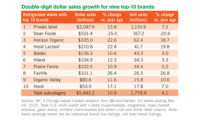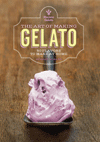U.S. private brands within the grocery channel recently demonstrated dramatic increases, posting annual sales of $138 billion across multi-outlet plus convenience store retail channels in 2017, according to new insights from the Arlington, Va.-based Food Marketing Institute (FMI) and IRI, Chicago. Still, supermarkets face major competitive challenges and are experiencing steady own-brand share leakage to other retail channels.
FMI and its insights provider IRI recently released the first half of a four-part series in their annual exploration of the “Power of Private Brands” — from the business side and from the perspective of the consumer. The “consumer” study focuses on insights into how to build engagement, while the “register” report reveals how the grocery industry can improve its private brand business, the organizations said.
Doug Baker, FMI’s vice president, industry relations, commented on the fat that 69% of consumers said it’s “very” or “somewhat important” to have a good assortment of private brands in food and beverage.
“Private brands have become full-fledged brands in their own right, and the research emphasizes the importance of not making assumptions when appealing to demographics and audiences, including how store brands are marketed and positioned,” he said.” In fact, Generation X is responsible for 31% of all dollars spent on private brands across all outlets, compared to 19% each for older millennials and younger boomers.”
The research outlines consumer demand trends, as well as a range of next steps for retailers, including how to further leverage the consumer’s desire for variety and how to increase trial to battle any lingering negative perceptions. Retailers made considerable progress not only in reversing sales declines, but also in closing the gap with national brands, FMI and IRI said, supported by a reduced sting from deflation. But the news wasn’t all positive. Retailers outside of the grocery channel — including mass and club operators — have been performing much better on the store brand side.
“While the news for private brands overall is good, there is a special hurdle for food retailers,” said Mark McKeown, principal of client insights for IRI. “We needed to uncover why the biggest growth is taking place outside the grocery channel.
“Our first step was examining the evolution of private brands into tiers and which of these were driving growth,” he added. “We then took a closer look at how private brands are performing in specific categories and departments to address competitive challenges.”
He said this year, the organizations examined the different groups of store brands, including lifestyle brands — products that cross over categories and departments and deliver a common promise such as clean label or organic — compared to standard retailer banner brands that don’t deliver a common promise. They examined how consumers perceived and purchased each.
To download the first half of the four-part series, “The Power of Private Brands, Part I: From the Register” and “Part II: From the Consumer,” visit www.fmi.org/privatebrands. FMI and IRI said they will unveil industry and global trends to round out the series in fall 2018.







